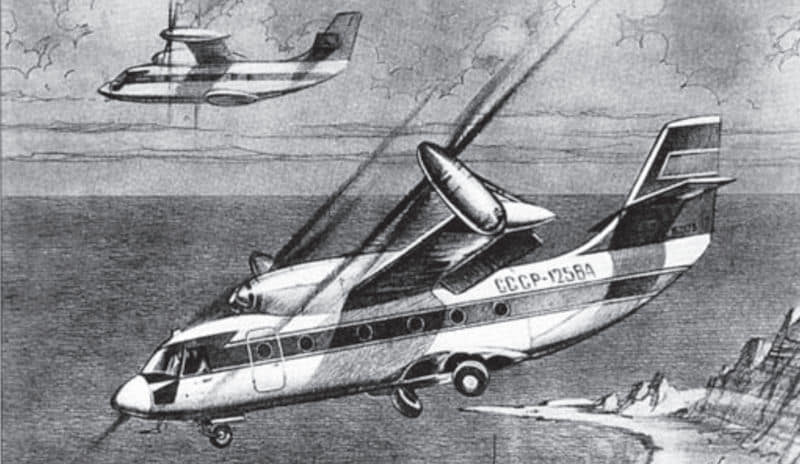The Soviet Attempt at a Tilt Rotor: The Mil Mi-30


That time the USSR tried to build their own Tilt Rotor aircraft: The Mil Mi-30, the Soviet Osprey.
Now we all know about the V-22, but the idea of a helicopter/airplane hybrid is nothing new. In fact, the idea has been around since the 1950s and the U.S. even built the XV-3, which flew in 1955.
The Vision of the Mi-30
But in the 1970s, the Soviets wanted their own Tilt Rotor aircraft that would have been a replacement for their Mi-8 “Hip,” which was (and still is) their mainstay utility helicopter. Not only did they want it to replace the Mi-8, but the proposed Mi-30 would have been superior in every way you can imagine. This ambition would ultimately lead to its cancellation.
The Mi-30 was to have a proposed speed of 342 mph, well over twice as fast as the Mi-8, though initially it would have carried fewer passengers (19 as opposed to the 24 carried by the Hip). Radio-controlled models were made, and it seemed that the design was workable. But then the Soviet leadership got involved and demanded that the Mi-30 should carry at least 32 passengers or 5 tons of cargo.
Design Changes and Government Interference
As a result, the design was changed so that the aircraft could use 3 Klimov TV3-117F engines, the same kind used later in the Mi-28 “Havoc” attack helicopter. This increased the weight of the Mi-30, but was still workable. But then the leadership interjected again… as they do.
This time, they wanted the Mi-30 to not only transport troops but also be an effective Attack/Support aircraft as well, similar to the legendary Mi-24, which was being deployed as part of the Soviet invasion of Afghanistan in the 1980s. Oh… and they only wanted 2 engines used instead of 3. So the design was changed to use the massive Lotarev D-136 engines, the same ones used on the Mi-26.
The Collapse of the Program
This more than doubled the weight to a massive 30 tons, twice as heavy as the V-22. But the government coughed up the money for the program, and Mil got to work on designing what would have been the first prototypes. But then something else happened that would seal the fate of the entire program.
You see, by the time Mil got to work, the year was 1991, and the USSR no longer existed. There was no more money for development, and even then, there was no Soviet military to buy the aircraft. 20 years of development, gone to waste seemingly overnight, and all because Moscow kept on changing the requirements on the fly. But you have to wonder what could have been if the Soviet leadership just left the designers alone to develop what they initially wanted.
~NC









